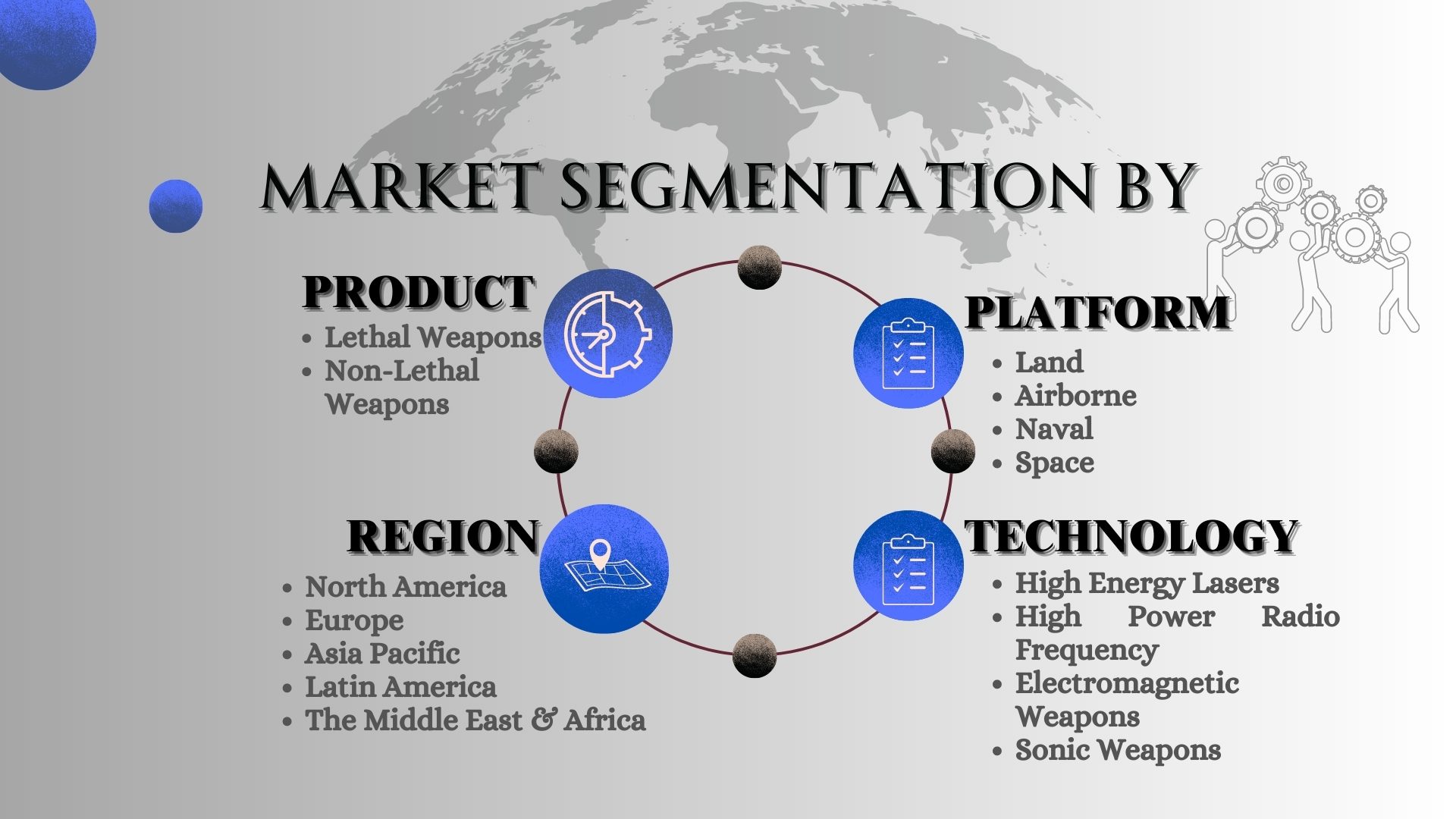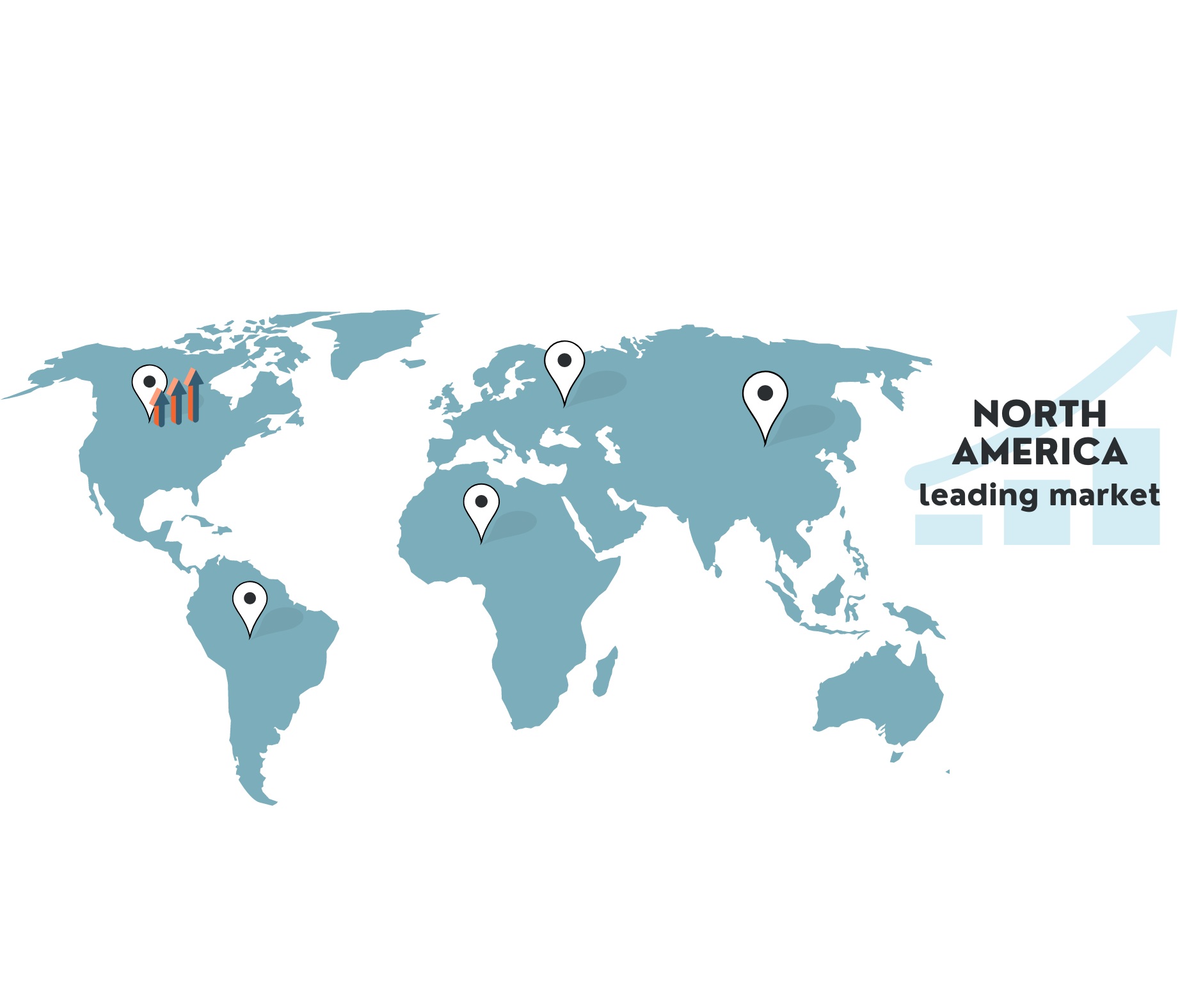Description
The Global Directed Energy Weapons Market size was USD 6.33 billion in 2022 and it is expected to grow to USD 17.02 billion in 2030 with a CAGR of 19.45% in the 2023-2030 period.
Global Directed Energy Weapons Market: Overview
The Global Directed Energy Weapons (DEW) Market has been gaining increasing attention and investment due to advancements in technology and the growing interest of various countries in developing and deploying such systems. Directed energy weapons are a class of weapons that use directed energy, including lasers, microwave, and particle beams, to target and engage enemy assets. DEWs can be categorized into various types based on the type of energy they use, including laser weapons and high-powered microwave (HPM) weapons. Each type has its specific applications and advantages. Directed energy weapons have potential applications in various domains, such as defence, homeland security, space warfare, and non-lethal crowd control. They can be used for missile defence, precision strike, countering unmanned aerial vehicles (UAVs), and disabling enemy electronics. Directed energy weapons offer several advantages over conventional kinetic weapons, including speed of light engagement, low cost per shot, and potentially unlimited ammunition, depending on the power source. Additionally, they can provide precision targeting and reduced collateral damage. Despite the promise of DEWs, there are some challenges to their widespread adoption. Technical challenges such as power generation and beam control need to be addressed, and there are concerns about potential countermeasures and international regulations surrounding the use of such weapons. The DEW market has been witnessing significant growth due to increased defence spending, advancements in laser and microwave technologies, and the need for advanced and efficient weapon systems.
Global Directed Energy Weapons Market: Covid-19 Impact
During the early stages of the pandemic, many countries implemented lockdowns and travel restrictions, which disrupted global supply chains and manufacturing operations. These disruptions could have affected the production and delivery of DEW components and systems. Additionally, defense budgets and priorities of various nations may have been impacted as governments focused on addressing the health and economic challenges posed by the pandemic. Shifts in spending and resource allocation could have influenced the development and procurement of DEW systems. Moreover, research and development activities in the defense sector might have been affected due to remote work arrangements and limitations on physical access to facilities.
Global Directed Energy Weapons Market: Growth Drivers

-
Advancements in Technology:
Ongoing advancements in laser, microwave, and particle beam technologies have significantly improved the capabilities of directed energy weapons. These advancements have resulted in more powerful, efficient, and compact DEW systems, making them increasingly viable for military applications.
-
Precision and Low Collateral Damage:
Directed energy weapons offer precision targeting capabilities, allowing for highly accurate engagements with minimal collateral damage. This precision is particularly valuable in situations where conventional kinetic weapons may cause unintended harm to civilian or friendly assets.
-
Potential for Scalability and Adaptability:
Directed energy weapons can be designed to have scalable power levels, making them suitable for a wide range of missions and target types. They can be adapted for various roles, including missile defense, anti-aircraft, counter-drone, and anti-vehicle applications.
-
Emerging Threats:
The evolving security landscape, including the proliferation of unmanned aerial systems (drones) and ballistic missiles, has increased the demand for advanced defense technologies, including DEWs, to counter these threats effectively.
Global Directed Energy Weapons Market: Restraining factors
-
Limited Range and Atmospheric Conditions:
Directed energy beams can be affected by atmospheric conditions, such as clouds, dust, and humidity, which may limit their effective range and accuracy. Adverse weather conditions can hinder the performance of DEWs, especially when compared to traditional kinetic weapons.
-
Countermeasures and Defence Mechanisms:
Potential adversaries could develop countermeasures to defend against directed energy weapons. For instance, they might use reflective materials or coatings to deflect or absorb the energy beams, reducing the effectiveness of DEWs.
-
International Regulations and Ethics:
The use of directed energy weapons raises legal and ethical concerns, especially when it comes to compliance with international humanitarian law. The ambiguity surrounding the status of DEWs under existing arms control treaties and the potential for misuse or accidental harm could lead to resistance and regulatory challenges.
Global Directed Energy Weapons Market: Opportunity factors
-
Increased Defence Spending:
Many countries have been increasing their defence budgets to modernize their armed forces and enhance their military capabilities. Directed energy weapons, as cutting-edge technologies, stand to benefit from this increased investment.
-
Rising Threats:
The evolving security landscape, characterized by emerging threats such as drones, hypersonic weapons, and ballistic missiles, creates a demand for advanced and effective defense systems like DEWs to counter these challenges.
-
Interoperability and Integration:
The integration of directed energy weapons with other defence systems, such as radar networks and missile defence platforms, can enhance overall military capabilities and improve interoperability in joint operations.
-
Non-Lethal Applications:
Directed energy weapons with non-lethal capabilities have potential applications in law enforcement, border control, and civil applications like riot control or incapacitating small, non-compliant vessels.
Global Directed Energy Weapons Market: Challenges
-
Power Generation and Storage:
High-power directed energy weapons require robust and reliable power sources. Developing power generation systems that can support the energy demands of DEWs while maintaining portability and operational efficiency is a significant challenge.
-
Beam Control and Pointing Accuracy:
Achieving precise and stable beam control is critical for the effectiveness of directed energy weapons. Maintaining accurate pointing and tracking of the target, especially over long distances, can be challenging due to atmospheric effects and platform motion.
-
Costs and Budgetary Constraints:
The development, deployment, and maintenance of directed energy weapons can involve substantial costs. Allocating resources and funding for DEWs amidst competing defense priorities and budgetary constraints may pose challenges.
-
Technical Maturity and Development Timeframes:
While significant progress has been made in the development of directed energy weapons, some DEW systems are still in the early stages of maturity. The transition from research and development to field deployment may take time and require further testing and validation.

Global Directed Energy Weapons Market: Segmentation
- Based On Product Type: The market is segmented into Lethal Weapons and Non-Lethal Weapons depending on the type segmentation. Among these the Lethal Weapons dominate the market share. This is due to the increasing demand for these weapons from military and defense organizations to counter the growing threat of terrorism and other security challenges. Lethal directed energy weapons can be used to disable or destroy enemy targets, such as aircraft, ships, and ground vehicles.
- Based On Platform: Based on platform segmentation, the market is further divided into Land, Airborne, Naval, and Space. Among these, the Naval sector contributes a significant revenue to the market. This is due to the increasing demand for these weapons from navies to counter the growing threat of anti-ship missiles and other threats to maritime security. Directed energy weapons can be used to shoot down enemy missiles, UAVs, and other targets.
- Based On Technology: Based on Technology, the market is segmented into High Energy Lasers, High Power Radio Frequency, Electromagnetic Weapons, and Sonic Weapons. Among these, the High Energy Lasers (HEL) segment contributes major revenue share towards the market. This is due to the fact that HELs are the most mature and developed technology among directed energy weapons. HELs have been used in military applications for decades, and they are now being deployed in a variety of platforms, including ships, ground vehicles, and aircraft.
- Based On Region: Based on Region, the market is segmented into five key geographical regions namely – North America, Europe, Asia Pacific, Latin America, and Middle East & Africa.
Global Directed Energy Weapons Market: Regional Insights

The United States has been at the forefront of directed energy weapons development. The U.S. military, including the Air Force, Navy, and Army, has been actively testing and deploying DEWs for various applications, such as drone defense, missile defense, and vehicle stopping. The U.S. has also invested in research and development to advance the technology and field operational DEW systems. European countries, particularly major NATO members, have shown interest in directed energy weapons as part of their efforts to modernize their armed forces and enhance defence capabilities. Countries like the United Kingdom, Germany, and France have been involved in DEW research and development projects, focusing on laser and microwave technologies. China has been actively investing in its military modernization and has shown significant progress in the development of directed energy weapons. The country has conducted various tests of laser weapons and high-powered microwave systems and has expressed its intention to deploy these systems for defence purposes. Russia has also shown interest in directed energy weapons, particularly in the laser and microwave domains. While information on their specific development and deployment is often limited due to secrecy, it is believed that Russia is actively working on DEW technologies. Some countries in the Middle East have been exploring directed energy weapons to enhance their defense capabilities and address regional security challenges. The region’s geopolitical dynamics and perceived threats may drive interest in DEW technology. Several countries in the Asia-Pacific region have expressed interest in directed energy weapons for various applications, including missile defense and counter-drone capabilities. Nations such as Japan, South Korea, and India have been involved in research and development efforts related to DEWs.
Global Directed Energy Weapons Market: Competitive Analysis
The Global Directed Energy Weapons Market is driven by various key players such as Lockheed Martin Corporation, Raytheon Technologies Corporation, Northrop Grumman Corporation, Thales Group, BAE Systems PLC, The BOEING Company, Textron, Inc., Rheinmetall AG, L3Harris Technologies Inc. and RAFAEL Advanced Defence Systems Ltd.
Global Directed Energy Weapons Market: Recent Developments
- L3Harris Technologies Inc.: In May 2023, L3Harris received orders totaling $160 million from the Marine Corps for multi-channel handheld and vehicular radio systems. These orders bring total program orders to $336 million.
- BAE Systems PLC: In April 2023, BAE Systems was awarded a contract worth $1.5 billion to provide the US Navy with new electronic warfare systems.


